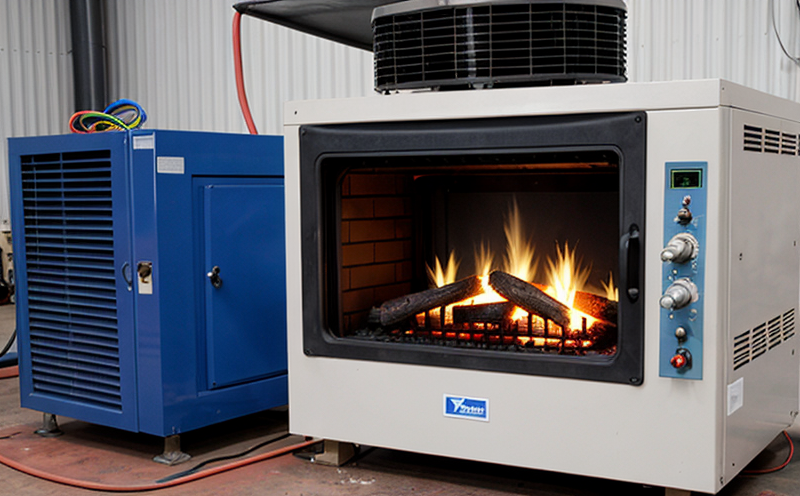ASTM E218 Thermal Response Time Testing of Temperature Sensors in Lighting
The ASTM E218 standard is crucial for ensuring that temperature sensors used in lighting systems respond accurately to changes in ambient temperatures. This test evaluates the thermal response time, which is critical for maintaining product reliability and ensuring compliance with international standards.
Thermal stability issues can lead to malfunctions or inaccuracies in sensor readings, affecting system performance and safety. By conducting ASTM E218 testing, manufacturers can guarantee that their temperature sensors meet stringent requirements, thereby enhancing the overall quality of lighting products.
The test involves subjecting the temperature sensor to a controlled temperature change and measuring the time it takes for the sensor output to stabilize within specified limits. This process is essential in ensuring that the sensor provides accurate readings under varying environmental conditions, which is particularly important for lighting systems exposed to diverse operating environments.
Compliance with ASTM E218 ensures that products are robust against temperature variations and meet market expectations for reliability and accuracy. This testing method is widely recognized and adopted by quality managers, compliance officers, R&D engineers, and procurement professionals who prioritize product integrity and performance.
Why It Matters
The accurate measurement of temperature in lighting systems is crucial for the efficient operation and longevity of these products. Temperature sensors play a pivotal role in controlling the light output based on ambient conditions, ensuring energy efficiency and safety.
Inadequate thermal response times can lead to misinterpretation of environmental changes, resulting in suboptimal performance or even failures in lighting systems. This is particularly critical for outdoor applications where temperature fluctuations are more pronounced. Ensuring that sensors meet the ASTM E218 standards guarantees consistent and reliable performance under a range of conditions.
From an operational standpoint, accurate sensing contributes to better energy management by optimizing light output based on real-time temperature data. Additionally, meeting these standards can enhance product lifespan and reduce maintenance costs. For quality managers and compliance officers, ASTM E218 testing provides a clear pathway to ensure that lighting products meet regulatory requirements and industry best practices.
For R&D engineers, this test is essential for validating the performance of new sensor designs under real-world conditions. By adhering to these standards, they can identify any potential issues early in the development process and refine their prototypes accordingly. For procurement professionals, ASTM E218 compliance ensures that they select suppliers who deliver high-quality components, thereby supporting overall product reliability.
Scope and Methodology
| Parameter | Description |
|---|---|
| Sensor Type | The test applies to all types of temperature sensors used in lighting systems. |
| Temperature Range | The specified range is from -40°C to 150°C, covering typical operating conditions for outdoor and indoor applications. |
| Test Setup | A controlled environment chamber simulates real-world temperature changes. |
| Stabilization Time | The time required for the sensor output to stabilize within ±2% of the final value. |
| Measurement Criteria | Acceptance criteria are based on ISO 9806-1:2014 and ASTM E218 standards. |
The ASTM E218 Thermal Response Time Testing involves placing the sensor in a controlled temperature chamber, where it is subjected to rapid temperature changes. The time taken for the sensor's output to stabilize within specified limits is measured. This ensures that the sensor responds accurately and quickly to environmental conditions.
The test setup includes a temperature chamber capable of precise control and measurement capabilities. The temperature change is typically achieved using heating and cooling elements, with the rate controlled to simulate real-world scenarios. The stabilization time is critical as it determines the sensor's ability to provide accurate readings under varying temperatures.
The acceptance criteria are based on international standards such as ISO 9806-1:2014 and ASTM E218. These standards define the allowable deviation for the stabilization time, ensuring that sensors meet industry benchmarks for performance and accuracy.
Benefits
The benefits of ASTM E218 Thermal Response Time Testing extend beyond compliance with international standards; they also enhance product reliability and customer satisfaction. By adhering to these rigorous testing protocols, manufacturers can ensure that their products perform consistently under diverse conditions.
For quality managers, this testing process provides a robust framework for quality assurance, ensuring that all lighting systems meet the highest standards of performance. Compliance officers benefit from clear guidelines that simplify regulatory compliance processes. R&D engineers gain valuable insights into sensor performance in real-world applications, enabling them to refine and improve their designs.
For procurement professionals, ASTM E218 testing ensures that suppliers deliver components meeting stringent quality benchmarks. This not only enhances product reliability but also reduces the risk of supply chain disruptions due to non-compliant materials.
The test results contribute to enhanced energy efficiency by ensuring accurate light output adjustments based on temperature changes. This is particularly beneficial for outdoor lighting systems, where environmental factors play a significant role in system performance. Additionally, meeting these standards can enhance product safety and longevity, reducing the need for frequent maintenance and replacements.





